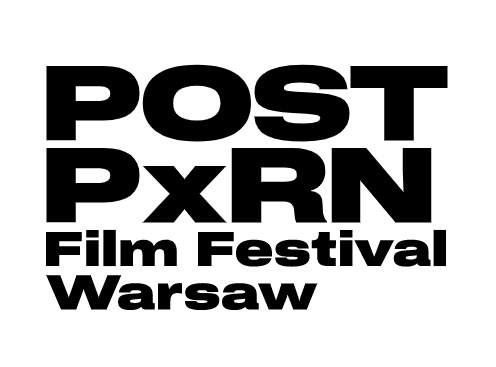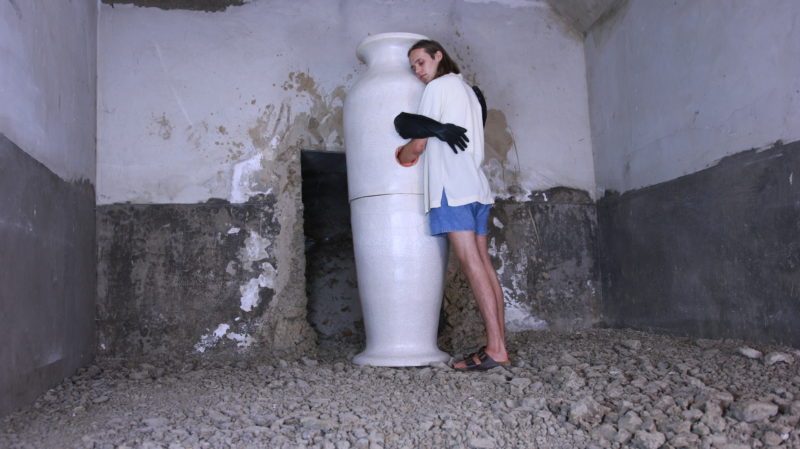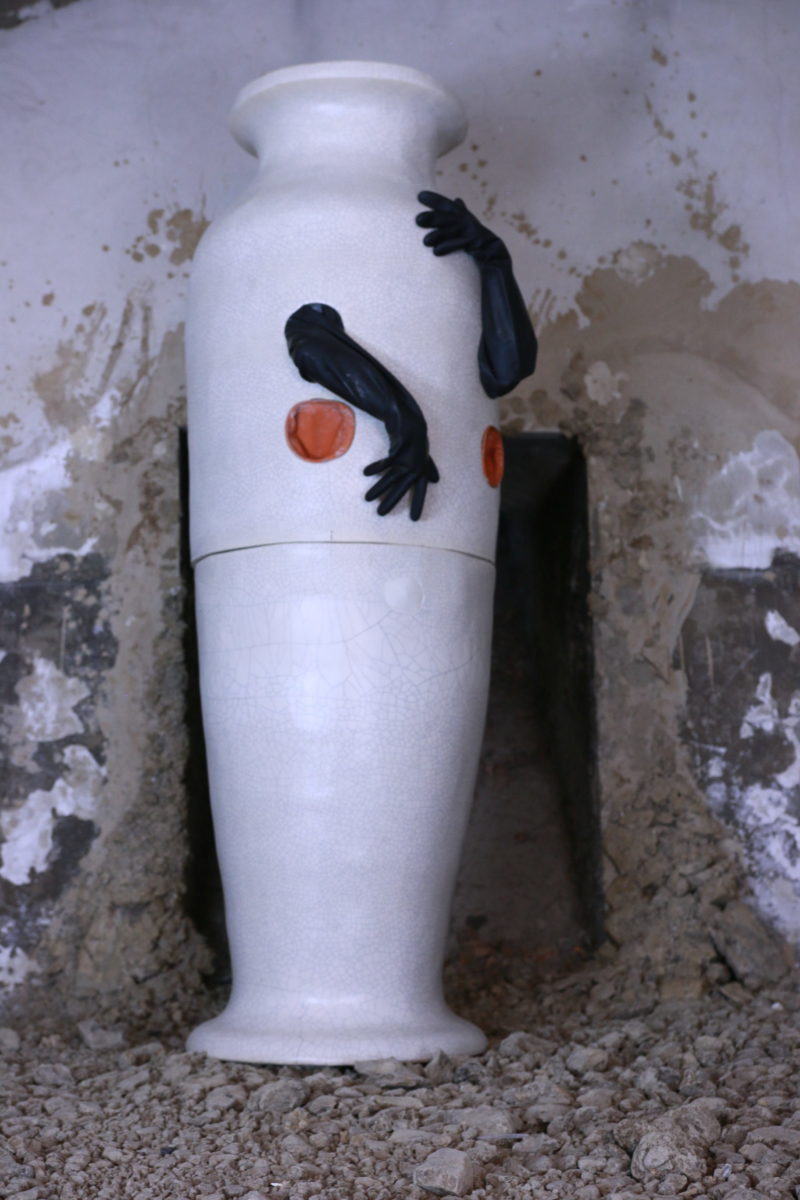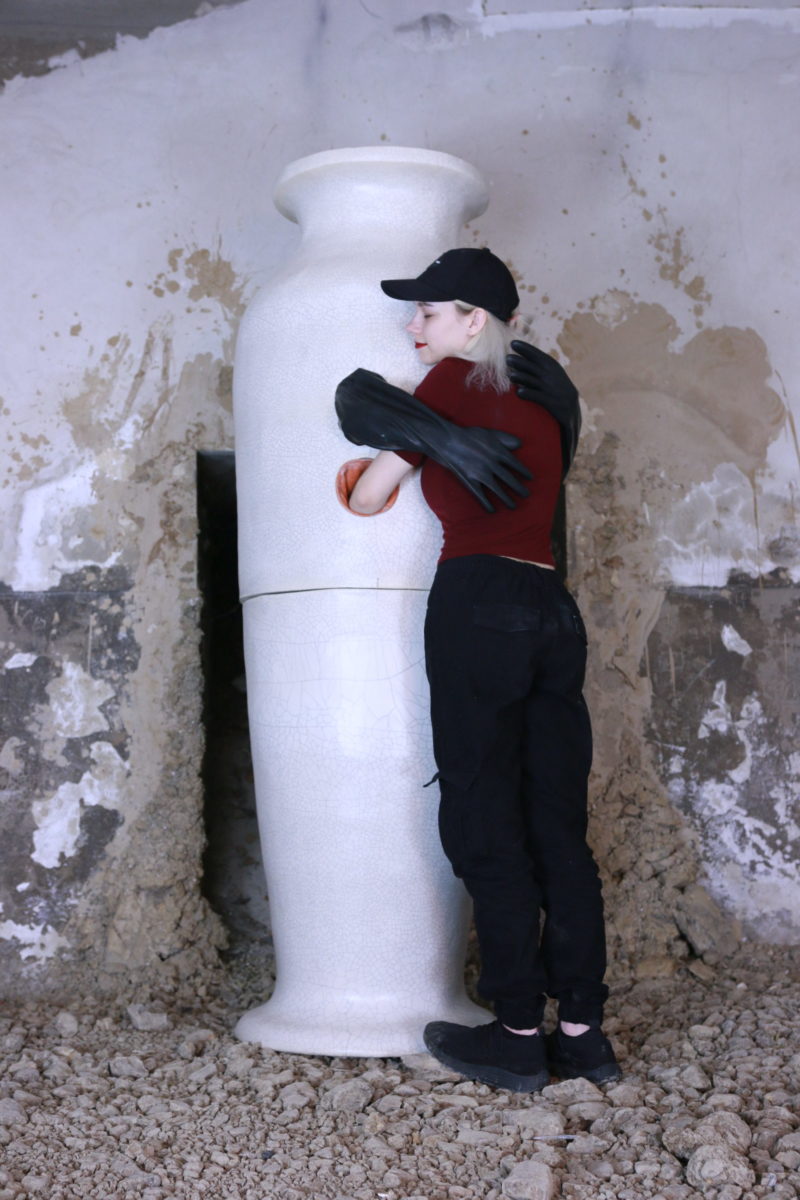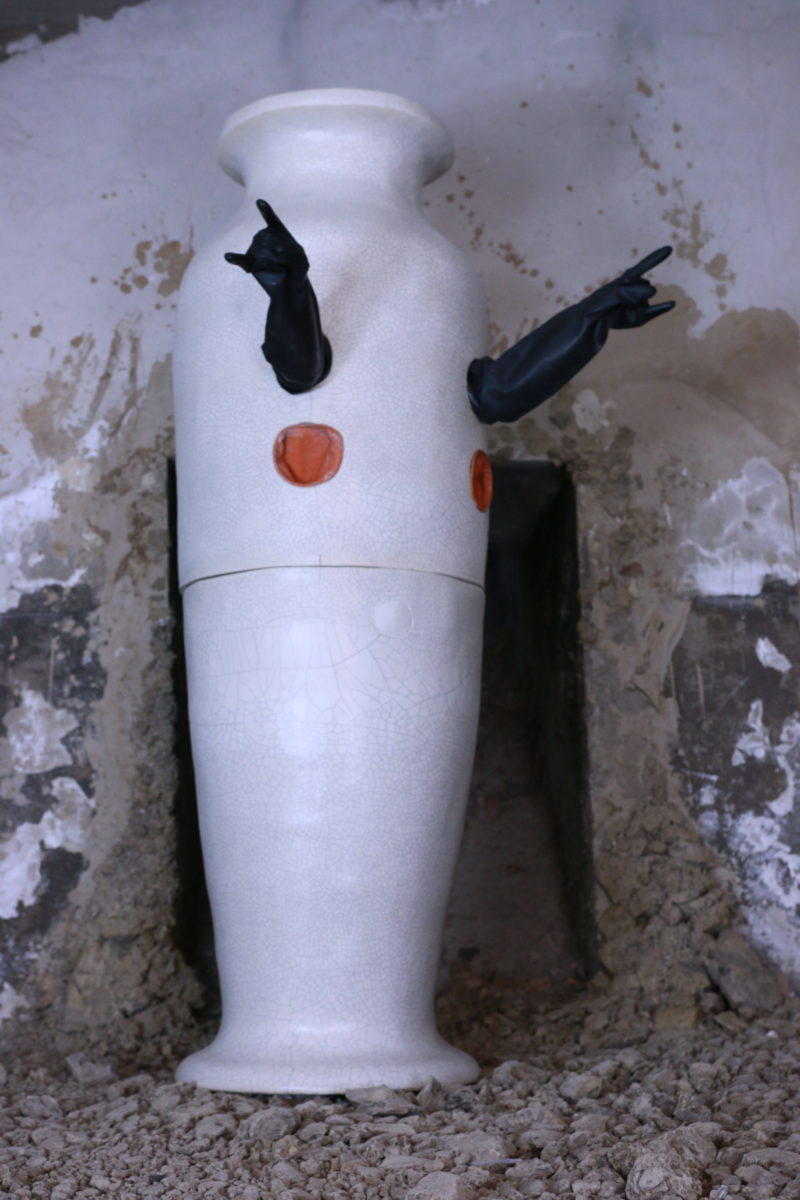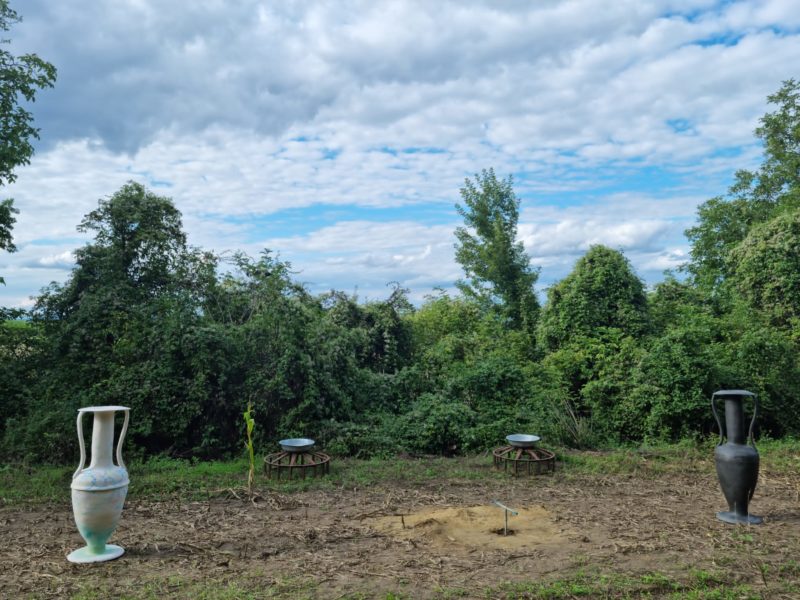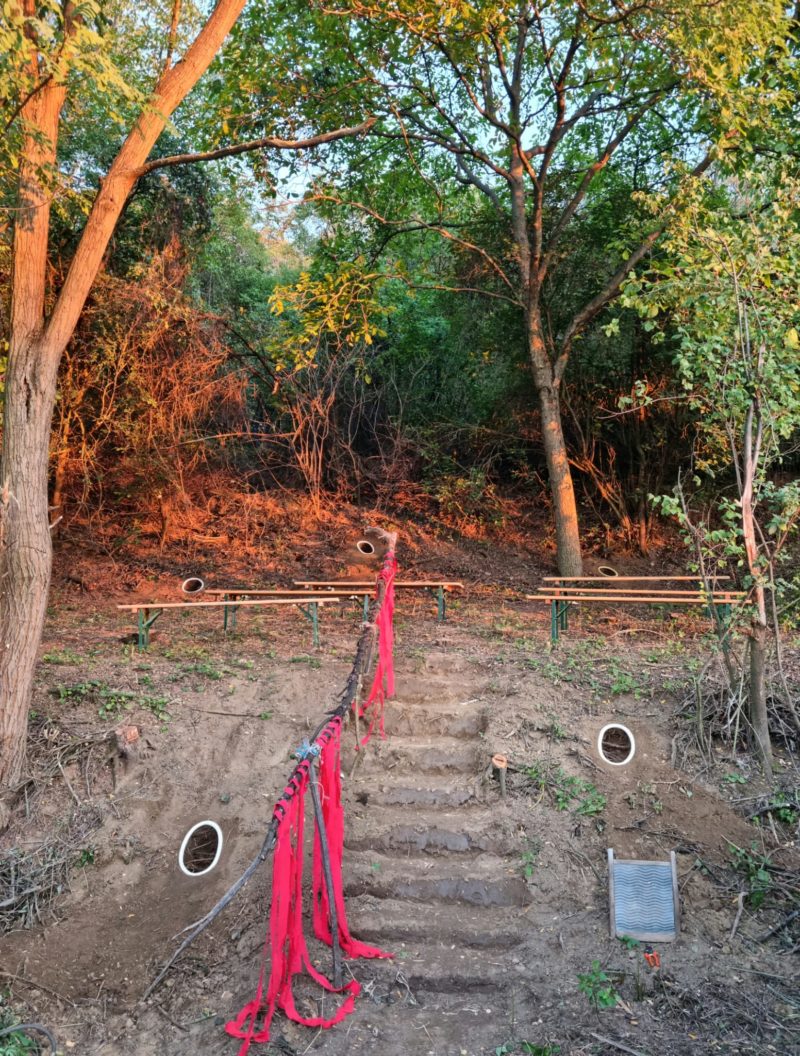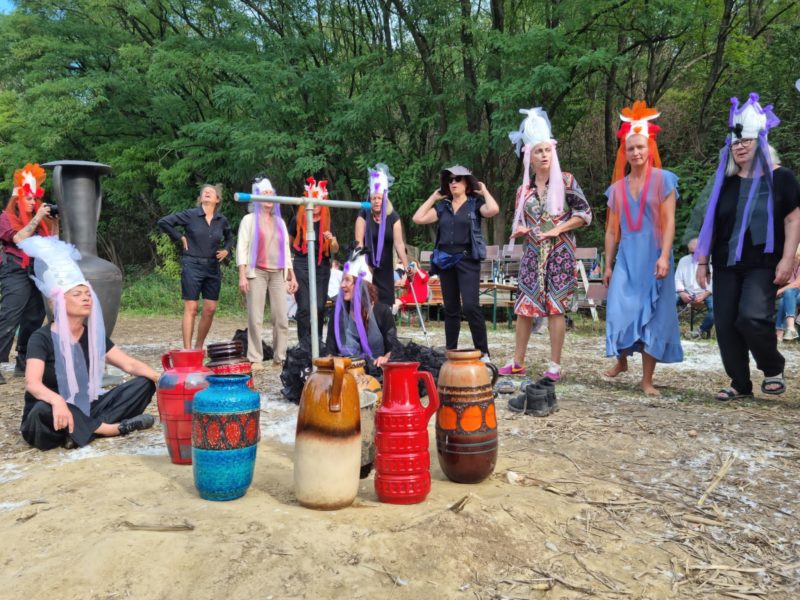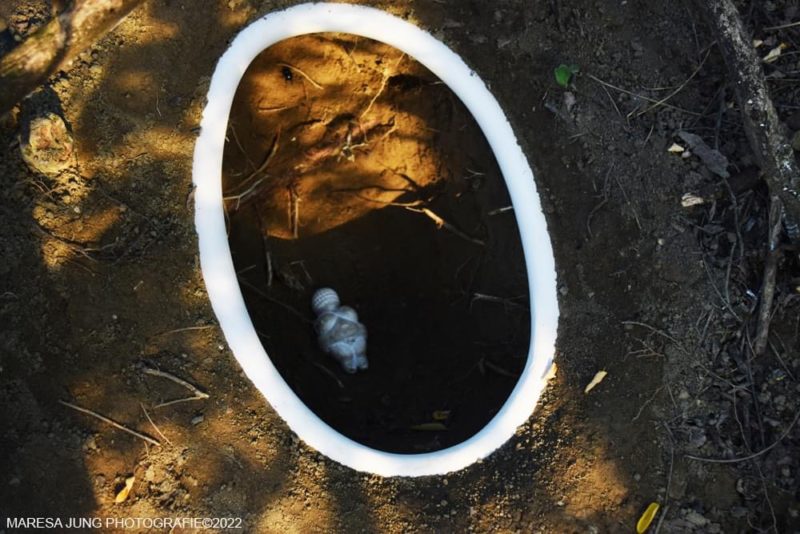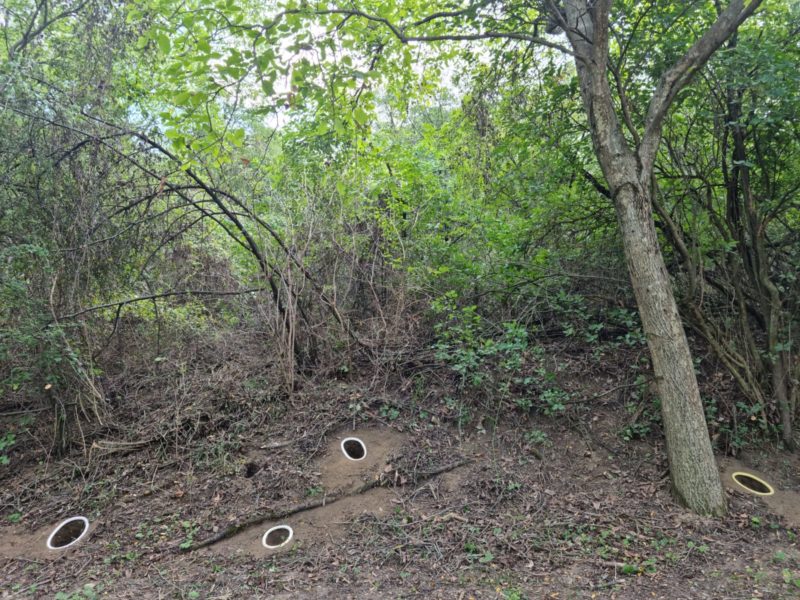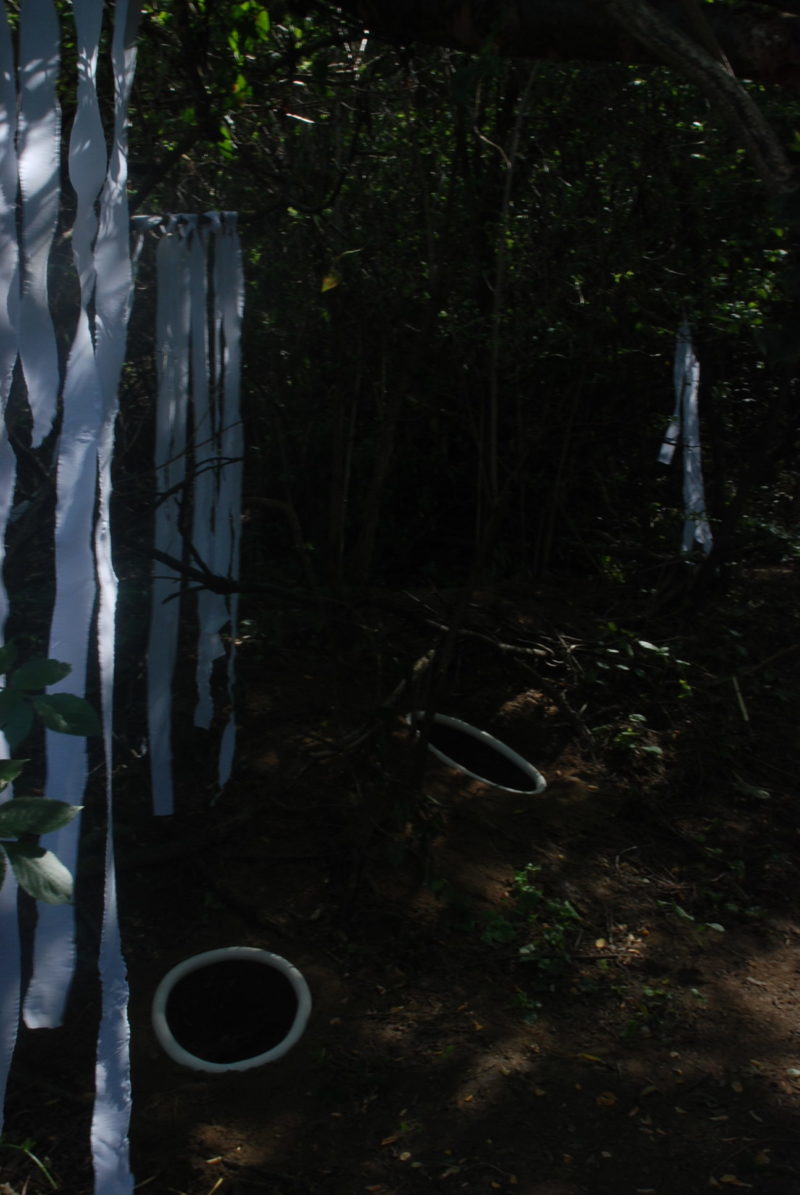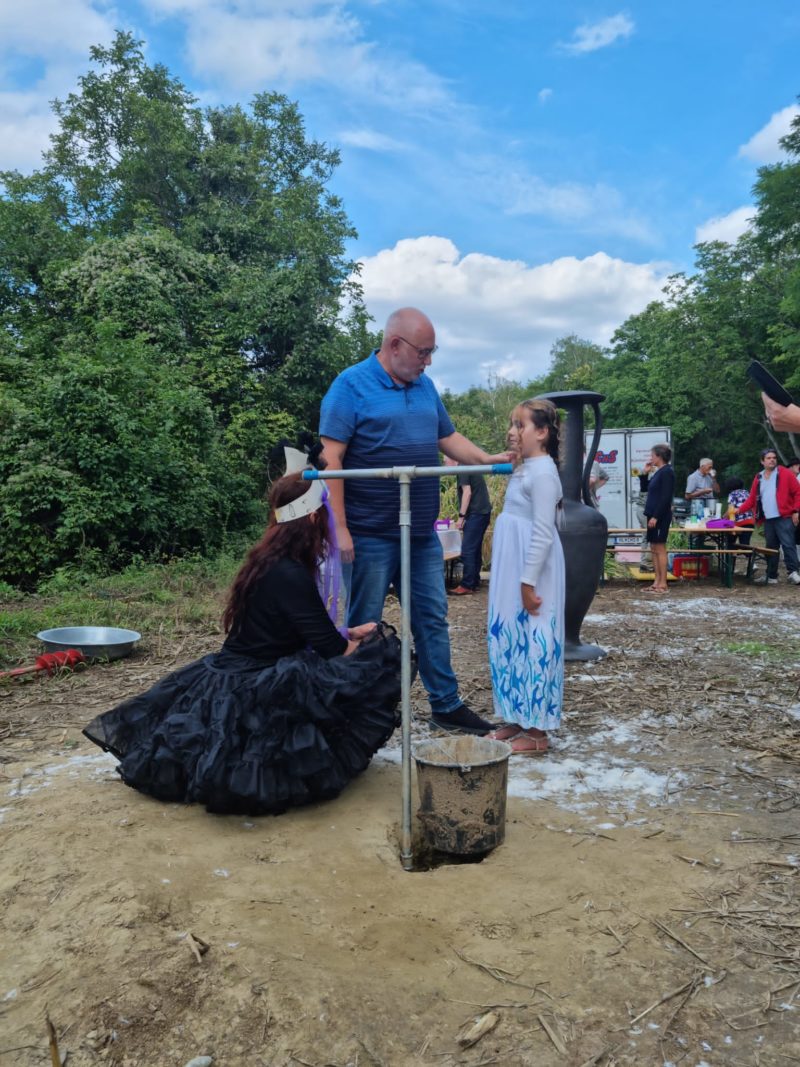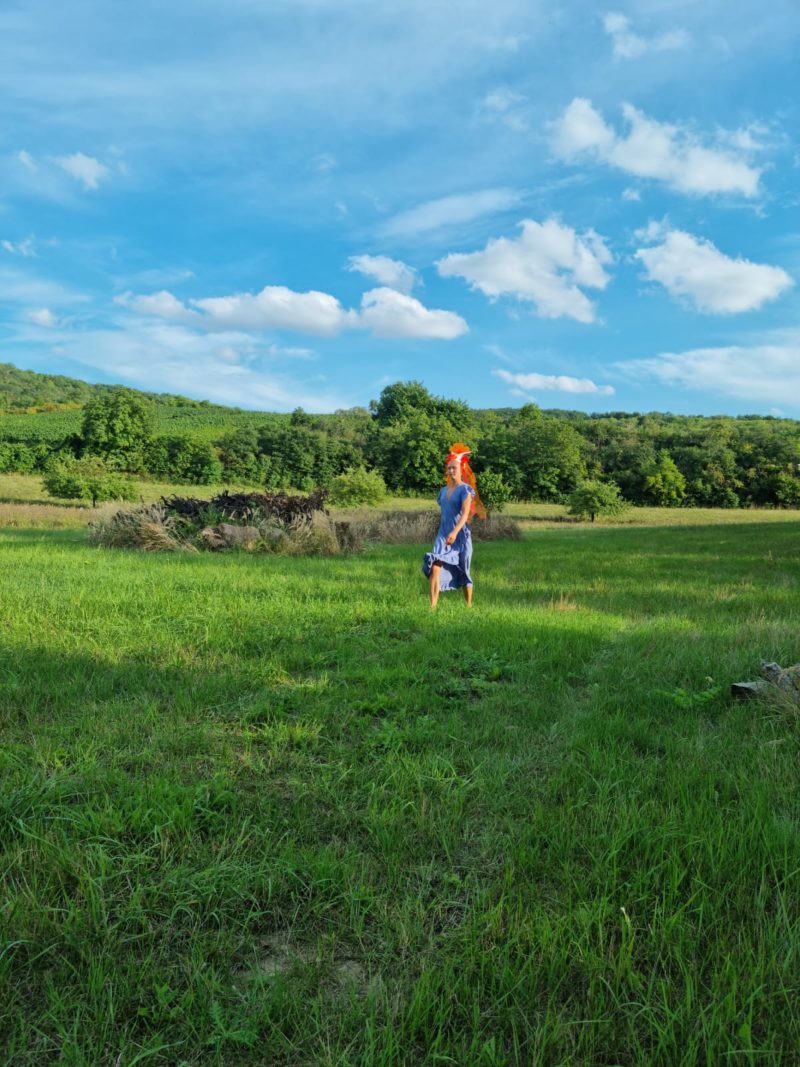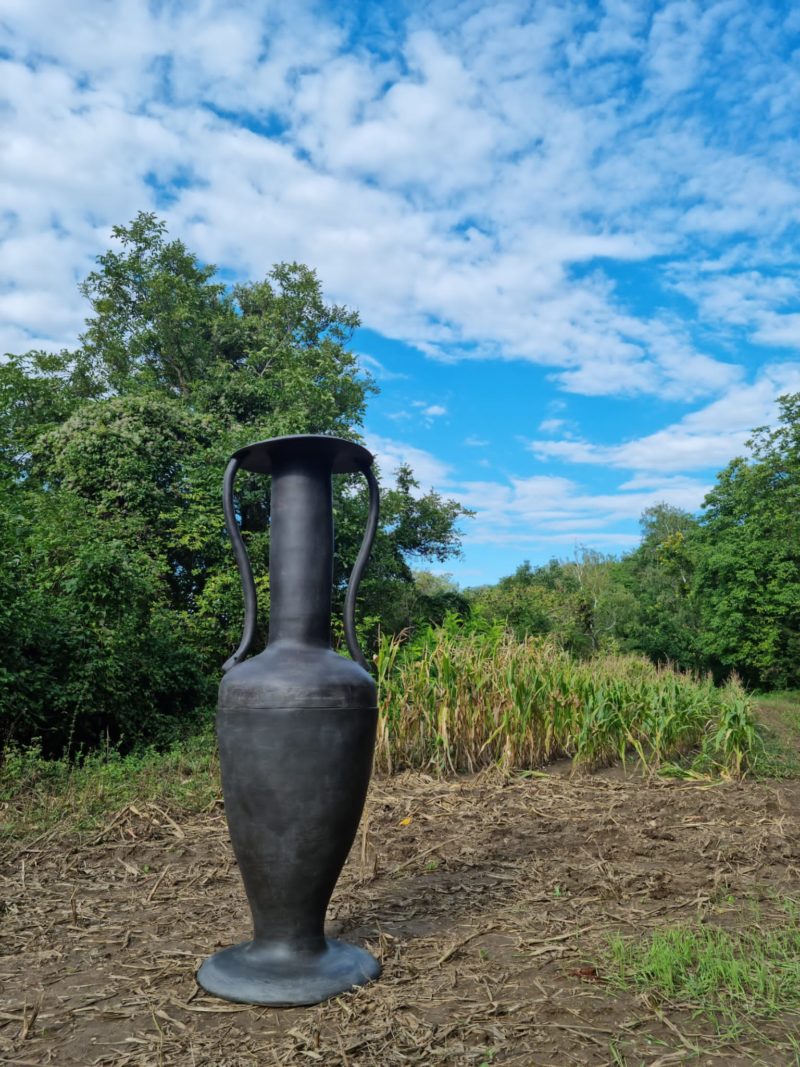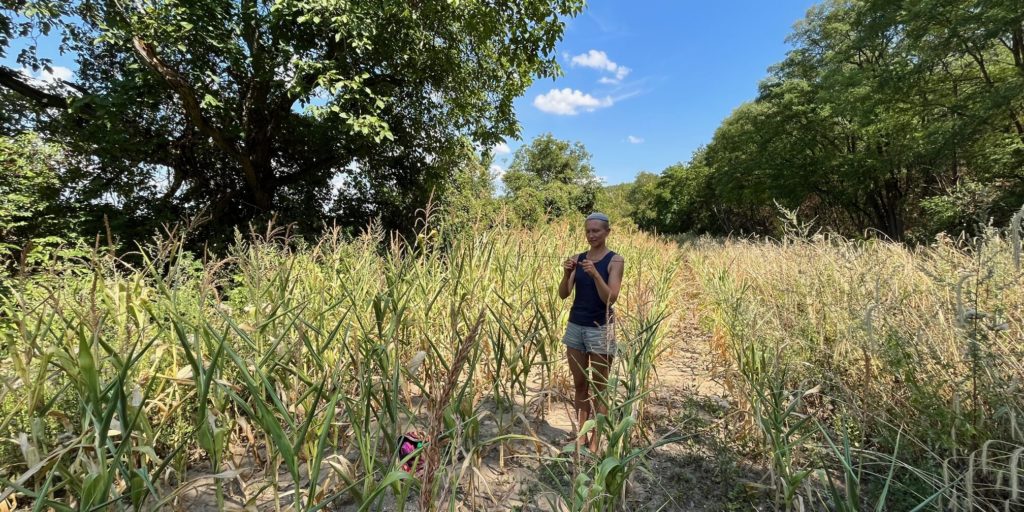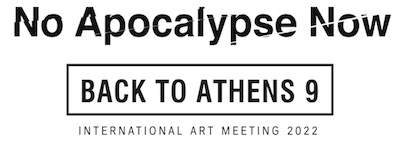2022, stoneware, rubber gloves 190cm x 70cm
Author: Alexandra Zaitseva
Die Brotskulptur – eine heldenfreie Begegnung
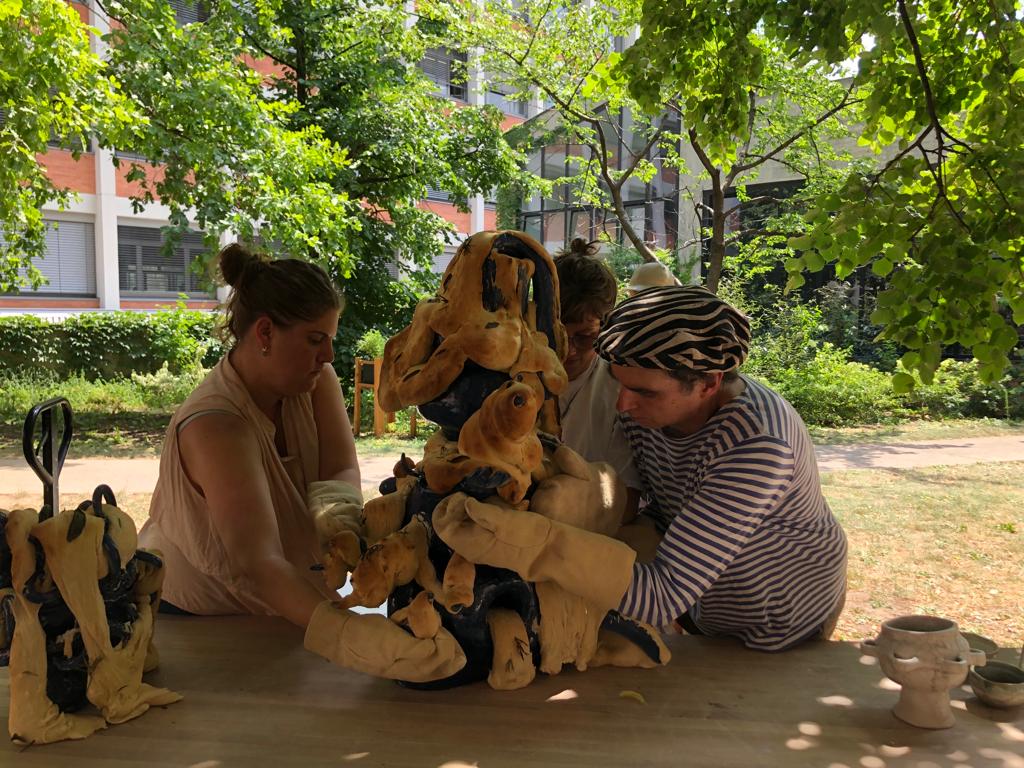
Als Reaktion auf die politischen Ereignisse im Februar 2022 haben wir einen Raum geschaffen der ohne Helden auskommt. Wir beschlossen eine Art von Feminismus zu leben der sich außerhalb des Ereignisvollen und Heldenhaften bewegt. Wir haben Räume gestaltet die Platz für Begegnungen und inspirierende Gedanken hatten, die frei von Gewalt und zweifelhaften Heldentum waren. Dabei ließen wir uns von dem Text von Ursula K Lequin “The Carrier Bag Theory of Fiction” inspirieren. Wir haben Gefäße geformt und eine Brotskulptur erfunden, diese Erfindungen wurden ein Teil unseres Rituals im Hof der Universität der Angewandten Kunst in Wien. Platons Text – “Das Gastmahl” begleitete unser Handeln.
Sticky Fingers – Summer School 2022
A collaboration of the Social Design Studio (Brigitte Felderer / University of Applied Arts Vienna) with the ENUTC-Project “TRUSTMAKING: Young creators and responsibilities for the new green transition” and the Ceramics Studio of the University of Applied Arts Vienna
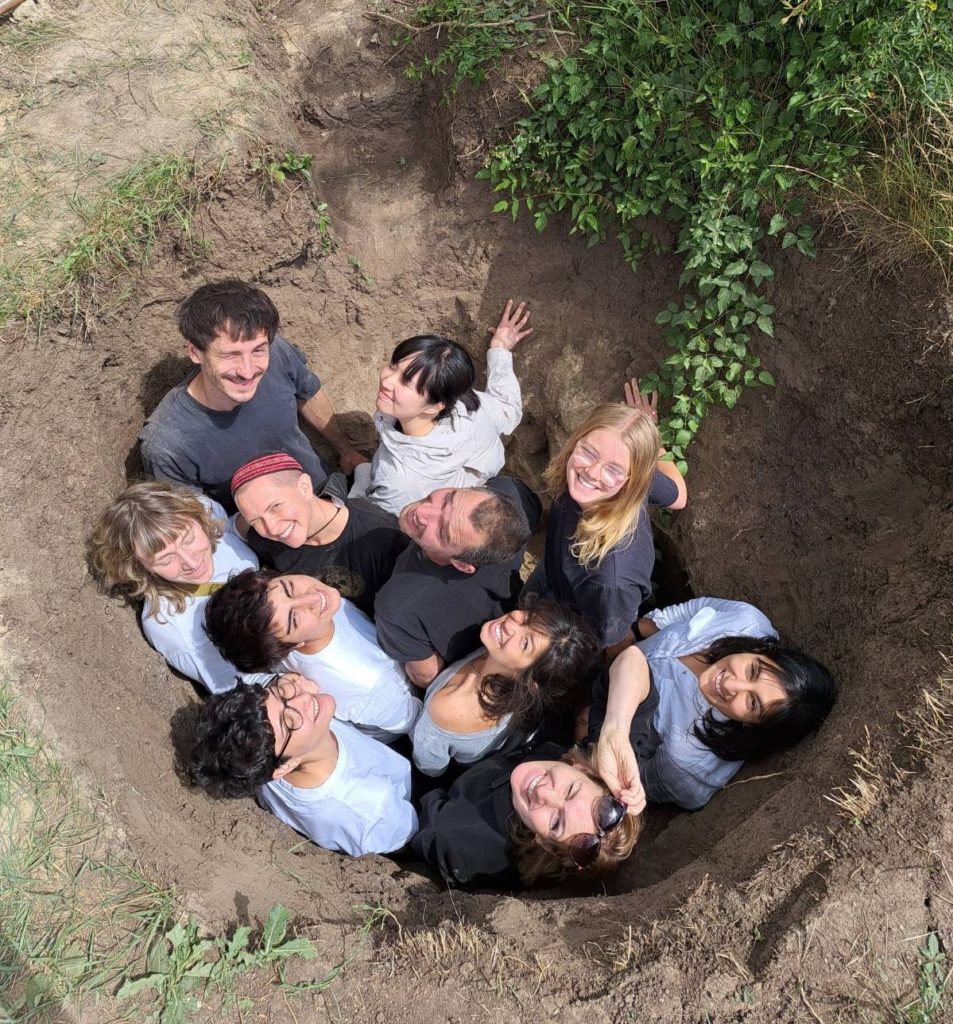
During the last two years city dwellers – especially youth – in particular yearned for being outside, for free expanses to move and be moved. The perception of open respectively public spaces in dense urban areas thoroughly changed with limited options of consumption. Urban qualities are not only evolving around possibilities to eat, drink and shop but rather around literally immaterial qualities which are transmitted by other people – of all generations –, by plants, by animals, by sensual experiences, by narratives, invisible systems, routines and rituals, rhythms, anchor points, by history and, of course, a prospect of an imaginable future. Urban structures are shaped by the interplay of their multiple layers. But layers opening up to qualities of “lieux infinis” (Encore Heureux) are adding to an atmosphere, to social density and cohesion, are communicating notions of in- as well as ex-clusion, of potentials and of unplanned possibilities of (urban) development and its infra-structure.
DAS HOLLENWASSERWUNDER GÖTTINNEN-FEST 2022
Das Göttinnenfest in Alberndorf mit Elisabeth von Samsonow
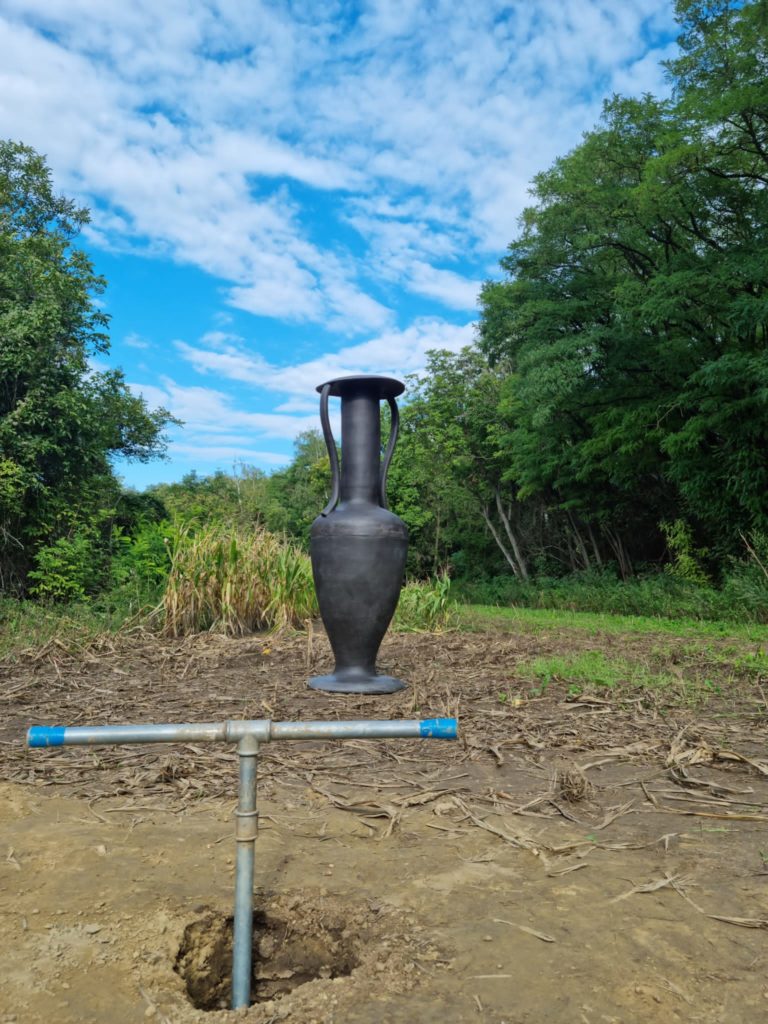
“Wasser ist existenziell, auch das Pulkautal ist heuer extrem vom Mangel an Regen betroffen. Die Bäume leiden, besonders die Eichen und Birken. Wir suchen nach Wasser, wir kartographieren die unterirdischen Wasserläufe. Wir verehren das Wasser als lebendiges, intelligentes Element. Wir erinnern daran, dass das Wasser – neben Bäumen und Steinen – der Grund war, warum bestimmte Orte verehrt wurden: das Wasser ist heilend, tröstend, erteilt den guten Rat.
Heuer werden wir im Rahmen des Göttinnenfestes einen kleinen Brunnen auf dem Jägeracker in Alberndorf bohren. Wir haben die beste Stelle dafür seit Langem gesucht und festgelegt. Die Bohrung selbst ist das Fest, die Erscheinung des Wassers die Epiphanie.”
Elisabeth von Samsonow
Porny Days – Filmkunstfestival Zürich
25-28.11.2022
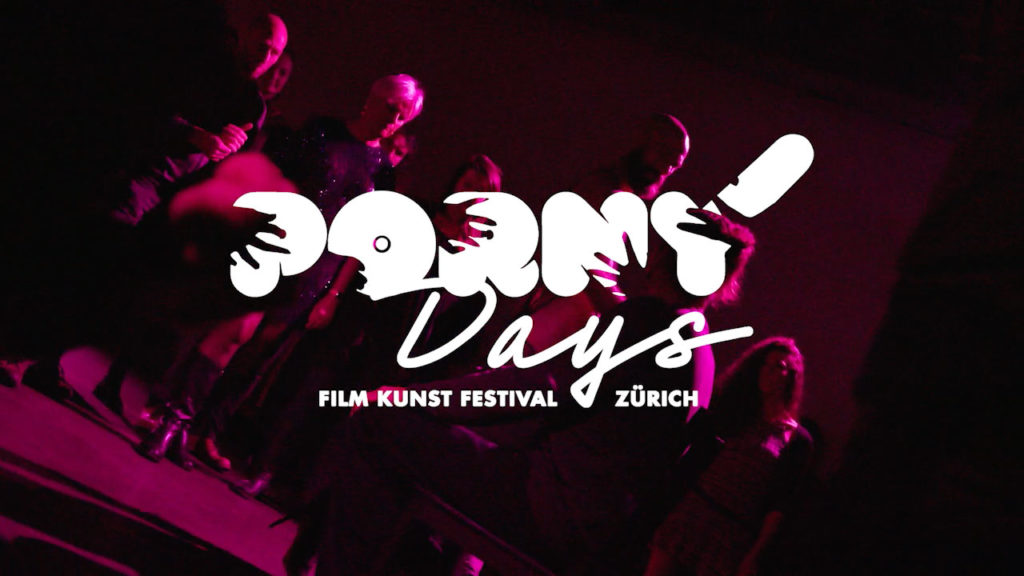
Mit dem Film Perestroika
An die Wand muss es nicht
Galerie Maerz – Eisenbahngasse 20, Linz
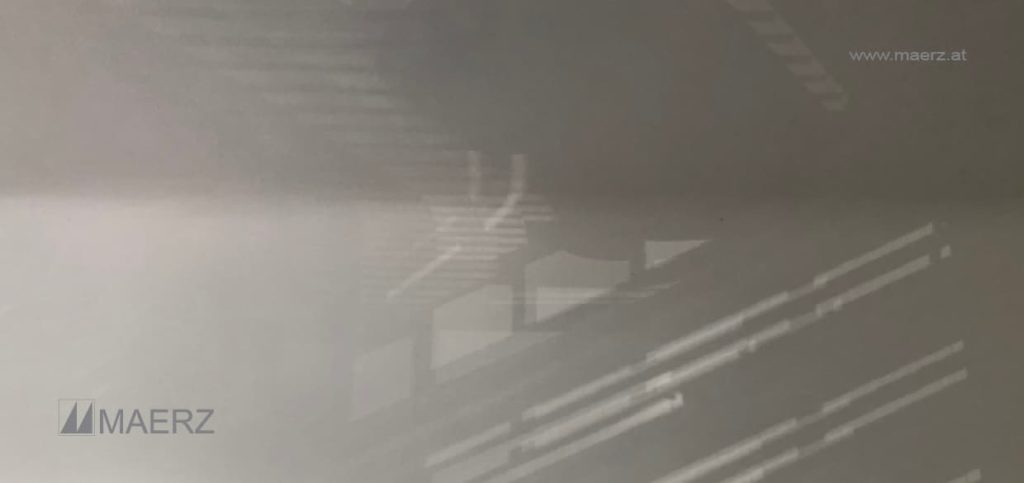
mit: István Antal, Sepp Auer, Judith Fegerl, Miriam Hamann, Lotte Lyon, Leopold Kessler, Michael Kienzer, Miriam Laussegger/Sascha A. Zaitseva, Sun Li Lian Obwegeser, Arnold Reinthaler, Betty Wimmer
kuratiert von Daniela Wageneder-Stelzhammer
KUNSTZELLE – Miriam Laussegger/Sascha Alexandra Zaitseva The Passion of CMYK
KUNSTZELLE vor dem MuseumsQuartier Wien
Mi 14.9.2022, 18.00 Uhr – 21.30 Uhr
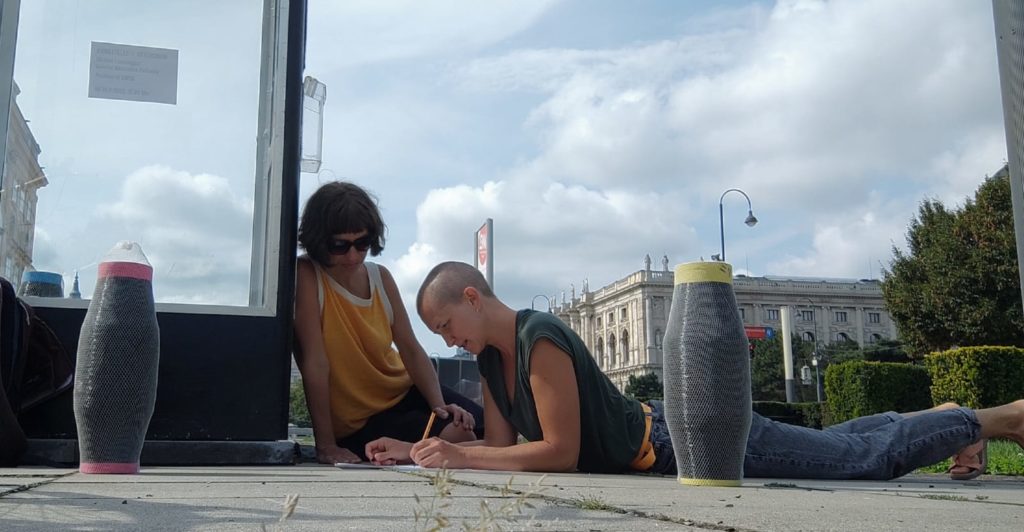
DAS HOLLENWASSERWUNDER GÖTTINNEN-FEST 2022
Back to Athens 2022
POST PxRN Filmfestival Warsaw
07.06. – 12.06.2022
